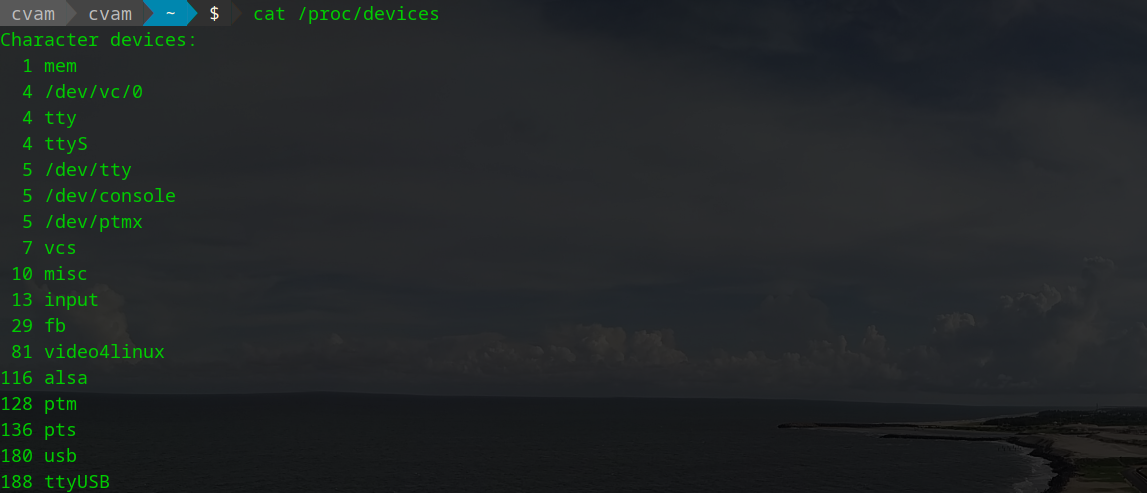# Major and Minor Numbers.
4th jan, 2020
What is so special about the character drivers?
For byte-oriented operation, the majority of the drivers are char device drivers for example serial drivers, Audio drivers,
camera drivers and basic I/O drivers. Also, we can't back and forth the data in the device file all these kinds of devices need a char device driver. All the drivers that
neither storage nor network device drivers are some type of char device drivers.
Steps to access a hardware device.
1. The application will open the device file which is created by device drivers.
2. Then this device file will find the corresponding device using major and minor numbers.
3. Then this Device Driver will talk to the hardware device.
One of the main features of the Linux Kernel is to abstract and handling of the devices. To Linux, everything is a file
and all the hardware devices act like a file which can be manipulated using basic system calls, for example, to write to a
the hard disk you write to a file, To read the inputs from the keyboard you need to read a file.
The driver will create a special file for every hardware device, to communicate to the hardware using those files.(Device
Files )
MAJOR & MINOR Numbers
The Linux Kernel represent char and block device driver as pair of numbers Major and Minor.
major Number identifies the driver associated with the device and major numbers can be shared by the multiple device
drivers.
See cat /proc/devices how major numbers are assigned on running instance.

As many Device Drives share a Major number so we have to assign different numbers to the devices which are using the same major
number to distinguish individual physical or logical devices. So this is the
Minor number.
two ways of allocation
Allocation of Major and Minor no.
1. Statically Allocated
2. Dynamically Allocated
If we want to set a particular available major number to your driver, we can use Static allocation method this will allocate the
major no if it is available. Otherwise, it won't.
int register_chrdev_region(dev_t first , unsigned int count , char *name);
first-->The beginning no of the range we want
count-->The total number of the contiguous device no we are requesting.
if(count is too large)
it could spill over the next major no, but it'll work as long as the number range we request is available.
name-->the device name which is associated with the number range.it'll appear in /proc/devices.
the function register_chrdev_region will return 0 if the mission is successful if not it will give some negative error
code.
dev_t structure :
it is typedef of __kernel_dev_t which is again typedef u32 which is again a typedef of unsigned int which holds 32 bit.
here 12 bits set aside for major no and 20 for minor no.
MKDEV(int major, int minor) //create a dev_t structure variable for the major and minor no.
MAJOR(dev_t dev);
MINOR(dev_t dev);
// all these macros are defined in linux/kdev_t.h
Example of Statically Allocation of major and minor numbers.
Dynamically Allocating:
If we don't want to fix the major and minor no, we can use this method. This method will allocate the available major number
dynamically.
int alloc_chrdev_region(dev_t *dev, unsigned int minor, unsigned int count, char *name);
dev-->Output only parameter. On success, it holds the first number in the allocated range.
minor-->first Minor number, Usually 0.
count-->total requested a number of the contiguous device.
Example of Dynamically Allocation of major and minor numbers.


